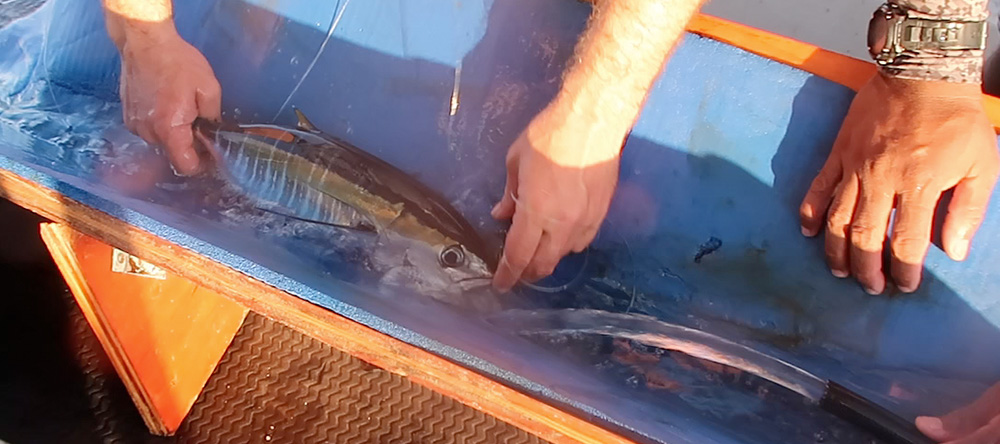- Research
PICRC research helps provide recommendations for Fish Aggregating Device site selection while improving our understanding of yellowfin tuna biology.
In late 2016, Palau International Coral Reef Center (PICRC) launched a long-term study meant to improve the productivity and efficiency of local fisheries within the Palau National Marine Sanctuary (PNMS). With Fisheries Biologist Dr. Alexander Filous at the lead of the project, PICRC is studying yellowfin tuna migration patterns to help manage their fishery. Given the complexity of the research, results are not expected to be published until 2022. Preliminary findings, however, are starting to improve our understanding of yellowfin tuna biology in Palau, and its significance for the development of the nation’s domestic fishery.
The overall project has three main components that involve 1) Studying the movement of commercially valuable adult yellowfin tuna through a sophisticated satellite tagging technique, 2) Using acoustic tagging to study the performance of Fish Aggregating Devices (FADs), and their ability to attract tuna, while improving access to small scale local fishers, and 3) Studying the chemistry of the otoliths– bones located underneath the brain on the fish – in juvenile yellowfin tuna in Palau, to determine their origin
and nursery sites.
Through this research, Dr. Filous and his team at PICRC have been able to determine that FADs located in 1,000 meters of water are more efficient at aggregating yellowfin tuna than those found in shallow waters. An appropriate FAD site-selection, however, that minimizes their distance from shore, is critical to improve access for local fishers. At the same time, an abundance of juvenile yellowfin tuna at about 25cm of length have been found recruiting in Palau’s near shore waters and FAD network. Based on their size, it is estimated that these fish are between 2-3 months old, and their otoliths have been collected to determine their origin. A subsample of these fish have also been acoustic tagged to study their movements in Palau’s FAD network over the next year.
“Overall, this study involves the understanding of the movement of tuna throughout the PNMS and how this information can be used to guide the development of more productive and efficient fisheries in Palau,” stated PICRC CEO, Dr. Yimnang Golbuu, “Diversifying Palau’s economy is imperative, and the PNMS opens the opportunity to develop a domestic fishery that ensures food security. With this study, PICRC hopes to ensure its efficacy,” he added.


